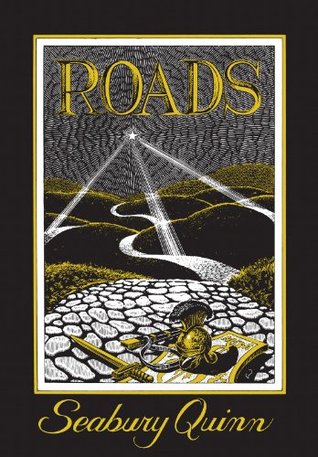 Gary Turner wrote this review.
Gary Turner wrote this review.
This is about as perfect of a “facsimile reproduction” as I could imagine. When I removed the book from its impressive box (the book comes in a gift box and includes a pamphlet with the biographies of both Quinn and Virgil Finley, the artist), it was as if I had the original 1948 Arkham House edition in my hands. Yellow the pages, add some dust, and you’d have to check the copyright page to verify that the book is a reproduction. I no longer have the original Arkham House book, but the reproductions of Virgil Finlay’s art look perfect; I think I spent about as much time admiring the art as I did reading the story, which I estimate to be about 20K words. So it is a smallish book, at 110 7 ½ x 5” pages, but attractive.
The story itself revolves, in three sections, around the Nordic barbarian Claus, who as Claudius had been a gladiator for Herod, but now, after a successful five-year career, is seeking to return to his native land. On his trip back, he rescues Joseph, Mary, and the baby Jesus, escaping to Egypt, from Herod’s soldiers, who are killing all the boy children to eliminate the newborn king of the Jews. Joseph and Mary thank Claus, and the infant Jesus “speaks” directly into Claus’s mind, thanking him, telling him he will live forever, and serve him forever. The next section skips forward about thirty years; Claus, having killed the soldiers of Herod, was forced to join the Roman army for protection, and rises to the position of primus centurion, aide and advisor to Pilate. Pilate, of course, decides the fate of Jesus and sends Claus to oversee the crucifixion. Near the end, Claus, showing mercy, does not allow Jesus’ legs to be broken and kills him quickly with a spear to the side. Jesus again “speaks” to Claus, thanks him for his mercy, but warns him that his work has not yet begun.
In the third and final section, Claus, with his also-immortal wife, first serve the Romans, then other lords as military leaders. Finally, as questions arise to their unnaturally long lives, they retreat to a poor district in Germany. Finding want and famine among the poor, one Christmas they give gifts of food and toys to poor children, and are rewarded with charges of witchcraft and treason. Fleeing northward, they find a valley of aelf people, small but clever, and … well, adding a little aelf magic, Santa Claus is born.
Well-written, but too much of a Christian Christmas fable for my taste. It would work better for early readers, especially those young enough to appreciate Santa. Collectors, who don’t want to pay hundreds of dollars for the original Arkham House edition, but still wish to fill a gap, may also want this book, as it is a reasonably priced.
(Red Jacket Press, 2005)
